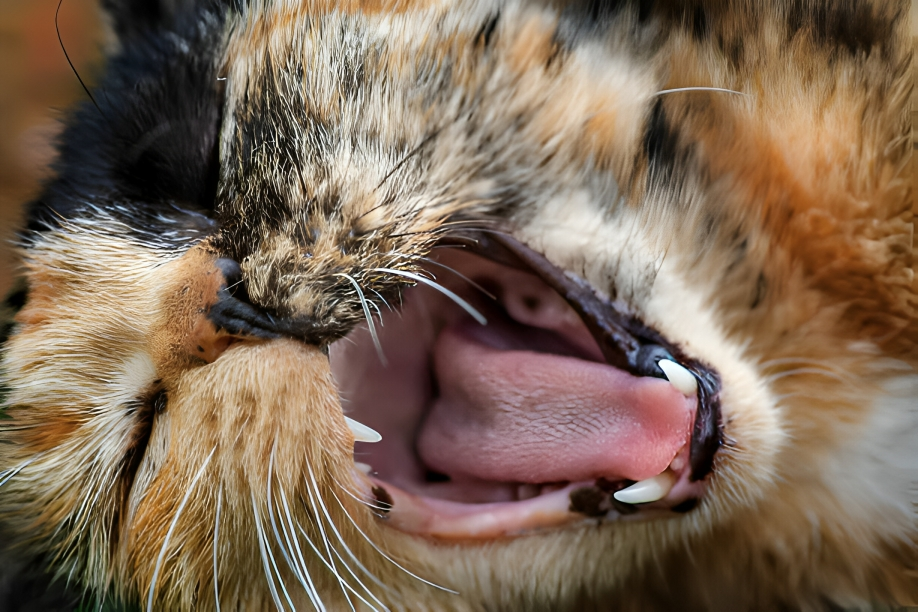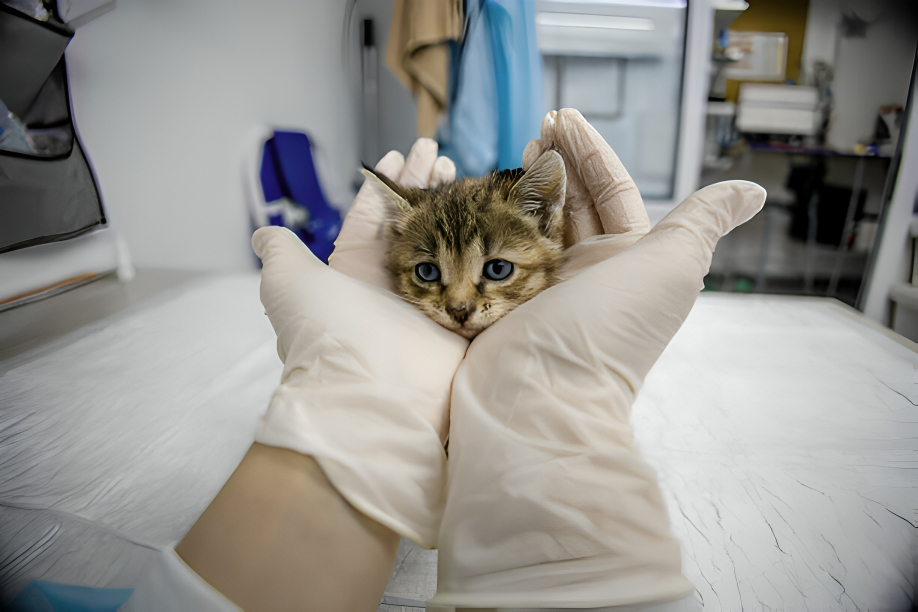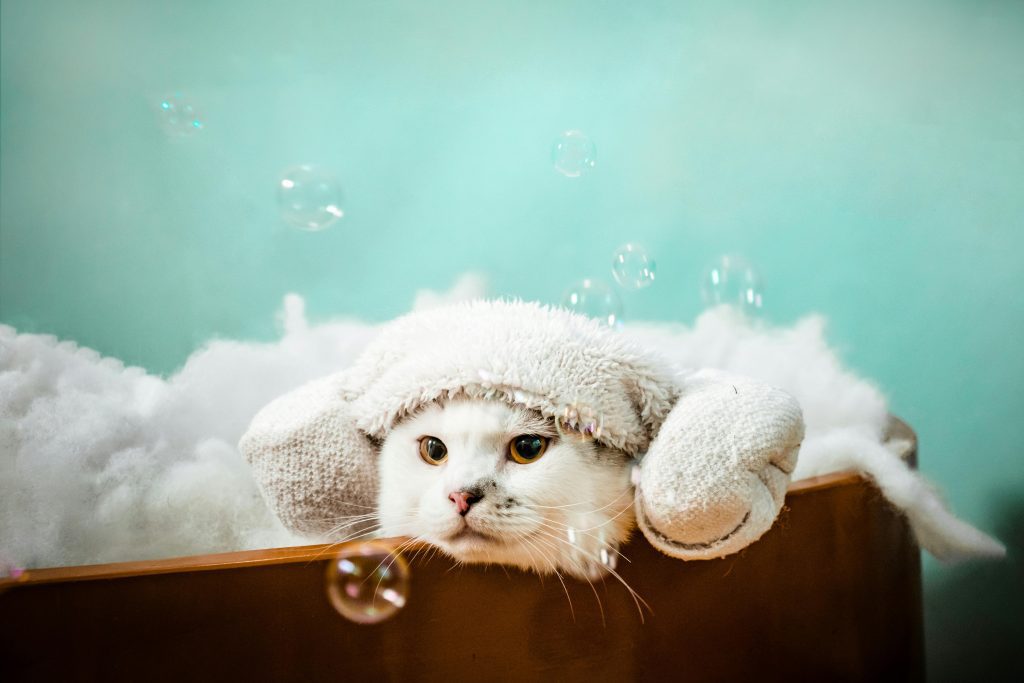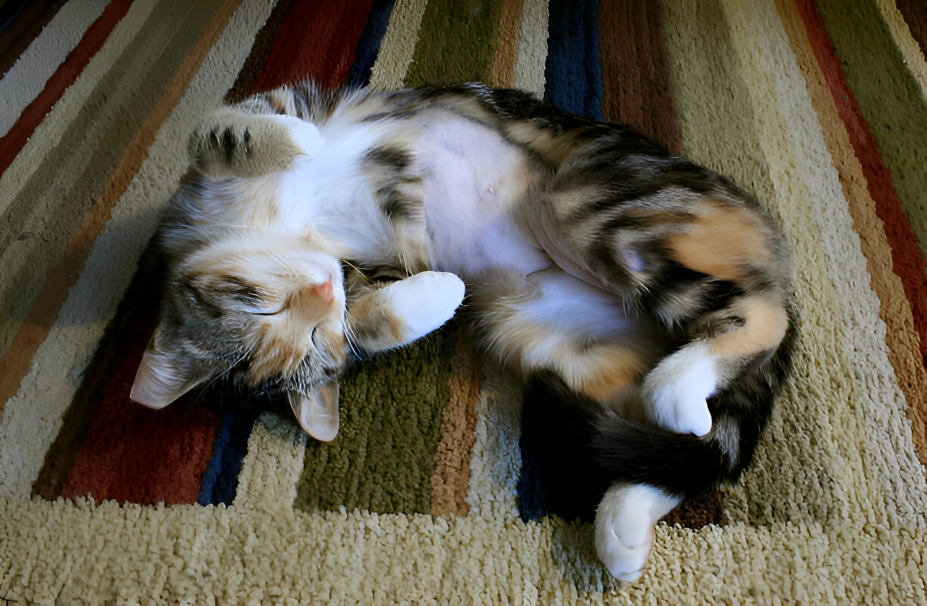Your Ragdoll’s silky coat naturally sheds—especially in spring and fall—but what if the hair loss feels different this time? Maybe you’ve noticed clumps on the couch, a thinning patch near her tail, or constant scratching that wasn’t there before. This isn’t just messy shedding—it could be your cat’s way of saying something’s wrong.
While normal shedding is seasonal, even, and irritation-free, abnormal fur loss is often patchy, persistent, and paired with skin or behavior changes. The good news? Most causes are treatable if you catch them early.
Here’s how to spot the difference, find the cause, and help your Ragdoll’s coat and health thrive again.
Understanding Normal Ragdoll Shedding
Ragdolls are moderate shedders, losing more fur in spring and fall as they switch coats, though indoor cats may shed lightly all year due to stable light and temperature.
Healthy shedding is even across the body, with no bald spots, sores, or frantic scratching. Run your fingers through a healthy coat—it should feel soft, with smooth, flake-free skin underneath.
To keep shedding under control:
- Brush 2–3 times a week (daily during peak seasons).
- Use a wide-tooth comb and soft slicker brush.
- Watch for signs of irritation or sudden thinning.
A little shedding is normal, but if you notice bald spots, itching, or thinning patches, it’s time to look deeper and protect your Ragdoll’s coat and health.
Recommended Post
6 Common Reasons Your Ragdoll Cat Is Losing Hair
When shedding shifts from normal to patchy, persistent, or itchy hair loss, it’s time to look deeper. In Ragdolls, fur loss is a symptom, not a diagnosis, and the cause can range from fleas to food allergies or even stress.
Pinpointing the root issue early is key, as most are manageable with the right care. Let’s break down the most common culprits.
Parasites and Flea Allergies
Even indoor Ragdolls can pick up fleas from visiting pets or outdoor exposure. A single flea bite can trigger flea allergy dermatitis, causing intense itching and fur thinning around the neck, back, or tail base. You may notice scabs or restless scratching. Prompt flea treatment and year-round preventatives are essential to stop the cycle.
Environmental & Food Allergies
Ragdolls can react to common allergens like pollen, dust mites, chicken, or artificial food additives. Signs often include fur loss around the face, ears, or belly, plus frequent scratching or licking.
A vet-guided food elimination trial is the gold standard for pinpointing dietary triggers, while environmental allergies may require lifestyle adjustments and medication.
Skin Infections & Fungal Issues
Ringworm and bacterial skin infections can cause circular bald spots, redness, and flaking. Ringworm often shows as scaly patches that can spread to other pets and humans.
Diagnosis involves fungal cultures or skin scrapings, and treatment may include medicated shampoos, oral antifungals, and thorough home disinfection.
Hormonal & Thyroid Disorders
Hormonal imbalances can subtly impact coat health. Hyperthyroidism may cause a dull, thinning coat alongside weight loss and increased appetite.
Post-pregnancy hair loss is temporary, but thyroid-related fur loss needs medical management. Blood tests confirm the diagnosis, allowing for targeted treatment that restores coat condition.
Stress-Induced Overgrooming in Ragdolls
Ragdolls are sensitive, and stress can manifest as psychogenic alopecia—overgrooming that leads to bald spots on the belly, legs, or tail tip.
As explained by feline skin experts at Purina, the most frequent causes of fur loss in Ragdolls involve parasites, stress, or poor nutrition—and catching them early matters.
Common stress triggers include moving, new pets, boredom, or routine changes. Providing environmental enrichment, hiding spots, and pheromone diffusers can help reduce anxiety-driven grooming.
Is Your Ragdoll’s Diet Causing Fur Loss?
A low-quality diet lacking omega-3 fatty acids, taurine, or essential minerals can make a Ragdoll’s coat dry, brittle, and prone to shedding in patches.
Choosing an AAFCO-approved, high-protein diet with quality meat sources helps maintain a healthy coat and reduces diet-related fur loss.
You Might Also Like
Dangerous Foods Ragdoll Cats Should Avoid | Safe Feeding Tips
Why Is My Ragdoll Cat Losing Fur in Specific Areas?
When your Ragdoll’s fur loss is localized—on the tail, belly, ears, or spine—it often points to a specific underlying cause rather than normal shedding.
Mites or food allergies often show up on the face and ears, and irritation from collars can thin the neck fur.
Where the fur’s missing can be the biggest clue. A bald belly might mean stress; itchy ears could point to mites. If the bald spot is spreading, the skin is red, or your cat seems uncomfortable, book a vet visit promptly.
Now that you know what to watch for, here’s how to treat your Ragdoll’s fur loss safely and effectively.
How to Treat Fur Loss Safely (And What to Avoid)
Treating fur loss in Ragdolls starts with finding the root cause, not guessing. While home remedies might seem tempting, using them before a proper diagnosis can make matters worse.
First, visit your vet to identify the cause. It could be parasites, allergies, stress, or a skin condition. Once the root problem is clear, you can start a treatment plan tailored to your cat. Here’s how to approach it effectively.
Veterinary Diagnosis First
Never begin treatment without a vet’s confirmation. A physical exam, skin scraping, fungal culture, or bloodwork will pinpoint the cause and prevent wasted time on ineffective remedies.
Flea & Parasite Control
Even indoor Ragdolls can get fleas or mites. Use a vet-approved topical or oral preventive consistently to eliminate and prevent infestations.
Diet & Supplement Support
Switch to a high-protein, omega-rich diet to promote coat regrowth. Vet-approved supplements like biotin or fish oil can further support skin and fur health.
Recommended Post
Stress Reduction Strategies
Many Ragdolls overgroom when anxious. Provide vertical spaces, quiet resting areas, enrichment toys, and consider pheromone diffusers to ease anxiety.
Recommended Post
Signs of Stress and Anxiety in Ragdoll Cats | Symptoms & Fixes
Treating Skin Conditions
Fungal infections, bacterial issues, or dermatitis need targeted medication. Use only vet-prescribed antifungals, medicated shampoos, or anti-inflammatory creams.
Preventing Future Fur Loss
Keeping your Ragdoll’s coat healthy is less about quick fixes and more about consistent, long-term care. Prevention starts with regular vet checkups to catch skin, thyroid, or allergy issues early.
Groom gently every 2–3 days to remove loose hair and spot early changes. Reduce stress with play, vertical space, and calming routines. Adjust for seasons—humidifiers in winter, lighter grooming tools in summer.
Remember, fur loss is often a symptom of deeper issues, not just “extra shedding.” By making coat health part of your cat’s lifestyle, you greatly reduce the chance of future bald patches.
Final Thoughts
Fur loss in your Ragdoll isn’t just a cosmetic issue—it’s your cat’s early warning system. Whether it’s stress, allergies, parasites, or an internal imbalance, sudden hair loss means something deeper is off. Don’t brush it off as just seasonal shedding or minor irritation.
Acting early can prevent long-term issues like infections or chronic disease, and in many cases, it leads to a full recovery. Remember, your cat’s coat reflects their inner health.
Start with a simple checklist: observe, document, inspect, consult, follow through. The sooner you act, the faster your Ragdoll returns to that silky, healthy self.
If your Ragdoll is losing fur, don’t wait—schedule a vet visit and keep notes on any changes. Got a shedding story or a tip that saved your couch? Drop it below—your advice might help another Ragdoll parent!
Founder of Cats Question, a veterinarian (DVM), and lifelong cat enthusiast with hands-on experience in feline care. Passionate about helping cat owners through expert-backed, compassionate advice inspired by years of living and learning alongside cats.






